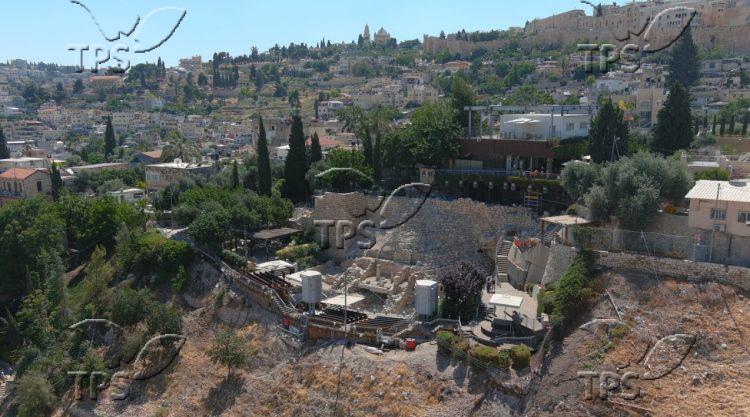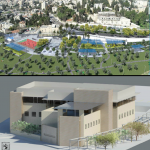Israeli Researchers Correlate Biblical Events with Archaeological Evidence in Jerusalem
Jerusalem, 2 May, 2024 (TPS) -- Israeli researchers have successfully dated findings from the First Temple period, marking the first time exact science has been employed to correlate events mentioned in the Bible with archaeological evidence.
The results of the nearly decade-long study challenge widely accepted perceptions regarding the construction activities of Jerusalem during the reigns of the kings of Judah, and were recently published in the peer-reviewed Proceedings of the National Academy of Sciences.
Researchers from the Israel Antiquities Authority, Tel Aviv University, and the Weizmann Institute of Science, analyzed over 100 radiocarbon dates obtained from various points in the City of David excavations to pinpoint the construction activities of Jerusalem during the reigns of the kings of Judah.
The City of David is the original core of the ancient biblical city. Located just outside the southern walls of Jerusalem’s Old City, it is considered one of Israel’s most important archaeological sites.
Dates were obtained by measuring the amount of carbon in organic material found at the site, such as grape seeds, date pits, and even bat skeletons.
Other variables included the analysis of ancient tree rings, allowing researchers to create a precise timeline spanning from 1200 BCE to the Babylonian destruction in 586 BCE, providing unprecedented insights into Jerusalem’s history. The researchers also examined layers of destruction and earlier floors previously considered a “black hole” in radiocarbon dating.
Contrary to previous beliefs that attributed the city’s growth to the reign of King Hezekiah in the 8th century BCE, the new research suggests that Jerusalem began to expand towards Mount Zion as early as the 9th century BCE, during the reign of King Jehoash.
“Until now, most researchers have linked Jerusalem’s growth to the west, to the period of King Hezekiah – just over 2700 years ago. The conventional assumption to date has been that the city expanded due to the arrival of refugees from the Kingdom of Israel in the north, following the Assyrian exile,” Tel Aviv University Professor Yuval Gadot said.
“However, the new findings strengthen the view that Jerusalem grew in size and spread towards Mount Zion already in the 9th century BCE, during the reign of King Jehoash, a hundred years before the Assyrian exile. In light of this, the new research teaches that the expansion of Jerusalem is a result of internal-Judean demographic growth and the establishment of political and economic systems,” Gadot explained.
The findings also reevaluate the age of the Jerusalem wall uncovered in the City of David.
“For decades, it was assumed that this wall was built by Hezekiah, King of Judah,” said Dr. Joe Uziel of the Antiquities Authority.
“But it is now becoming clear that it dates back to the days of King Uzziah, as hinted at in the Bible: ‘And Uzziah built towers in Jerusalem… and strengthened them,'” he said, quoting a verse from the Second Book of Kings. “Until now, many researchers have assumed that the wall was built by Hezekiah during his rebellion against Sennacherib, King of Assyria, in order to defend Jerusalem during the Assyrian siege.”
However, Uziel continued, “It is now apparent that the wall in its eastern part, in the area of the City of David, was built earlier, shortly after the great earthquake of Jerusalem, and as part of the construction of the city during the reign of King Uzziah. After the construction of the wall and until the Babylonian destruction, the city continued to grow and prosper.”







